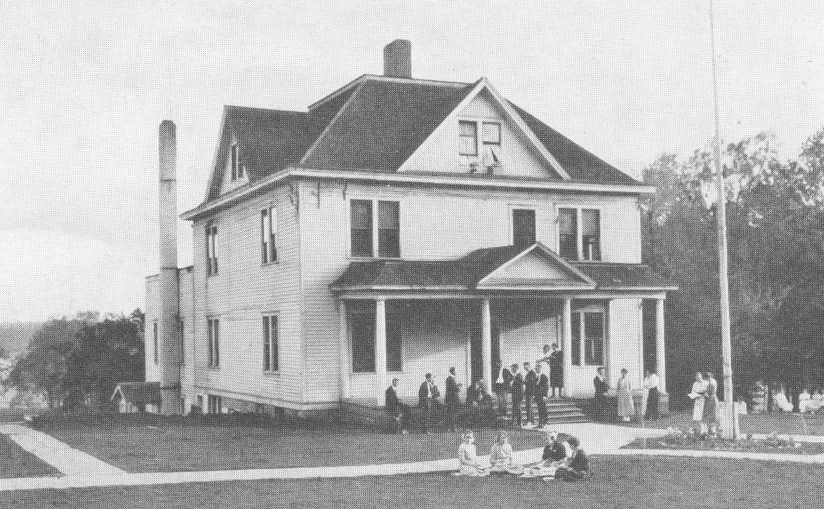Early Beginnings
The roots of Maplewood Academy began when the Minnesota Conference of Seventh-day Adventists decided during the 1888 camp meeting at Minnehaha Falls to open the Minneapolis Preparatory School in the basement of the First English Church on the northwest corner of 4th Avenue S. and E. Lake Street in Minneapolis.
It was the fourth preparatory school operated by SDAs and the first conference school established east of the Rocky Mountains.
School started on November 14, 1888 – the start being delayed until the 1888 General Conference had completed their meetings in the church. Professor Charles C. Lewis led out as principal assisted by teachers Sarah E. Peck, Elsie M. Westphal, and Myrtle G. Griffis. They trained 60 to 100 students each year between the ages of 15 and 30. The students stayed in homes in the area near the church. No thought was given to graduation exercises or the awarding of diplomas because the school was in session only a few months each winter due to farm work and the Colporteur Institute in the spring. In 1891, most classes were merged into the new Union College and the role of the Minneapolis school became more limited, eventually being merged with the Canvassers Institute in 1895.
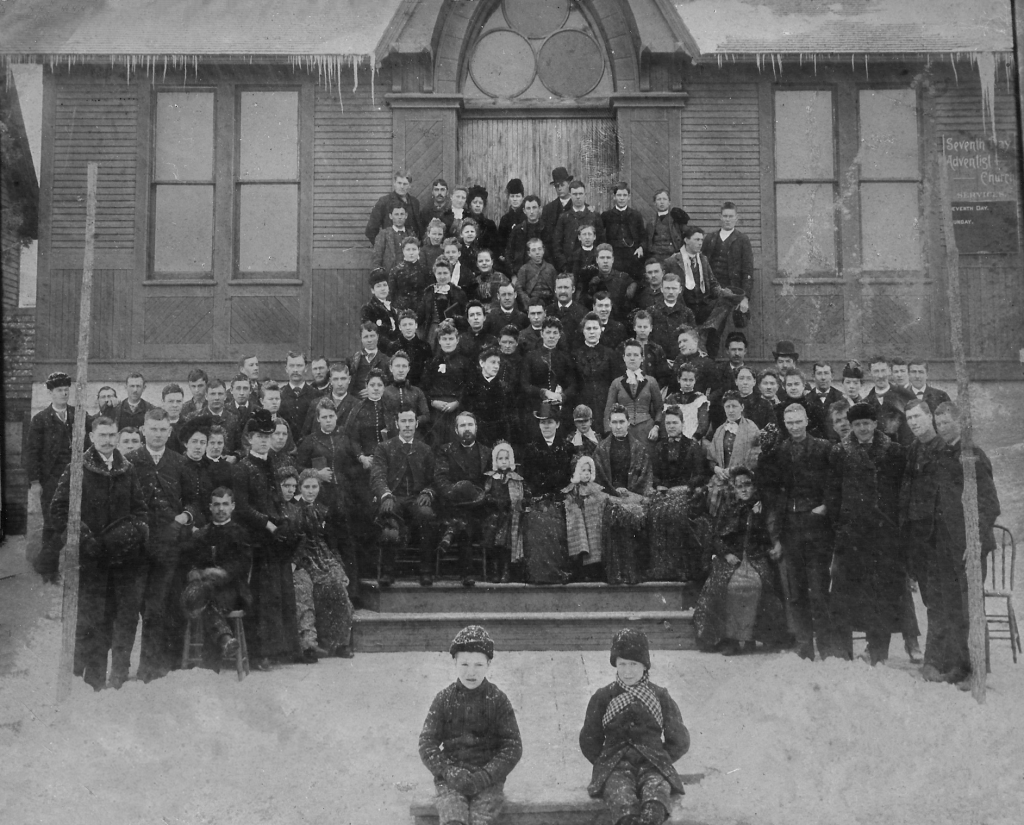
With time, it was realized that the Minneapolis school was not ideal – the church basement was not well ventilated, lodging facilities were unsatisfactory and the city presented attractions detrimental to spirituality. Minnesota Conference President, C. W. Flaiz, and others encouraged the conference to relocate the school to a farm where students could find employment to help defray school expenses. Throughout 1898-1899, efforts were made to relocate to a farm. Indeed, a farm was purchased at Anoka – however, opposition arose to having a school in the area – so the farm was resold and the school was relocated to Anoka in the rented former Commercial Hotel on the corner of Main and Ferry Streets.
It was renamed the Minnesota Industrial School and opened in the fall of 1899 with 100 students.
In the three story building, the two upper floors were dormitories, the main floor held the classrooms and the basement held the food service area. The school ran under the leadership of Professor Van Kirk.
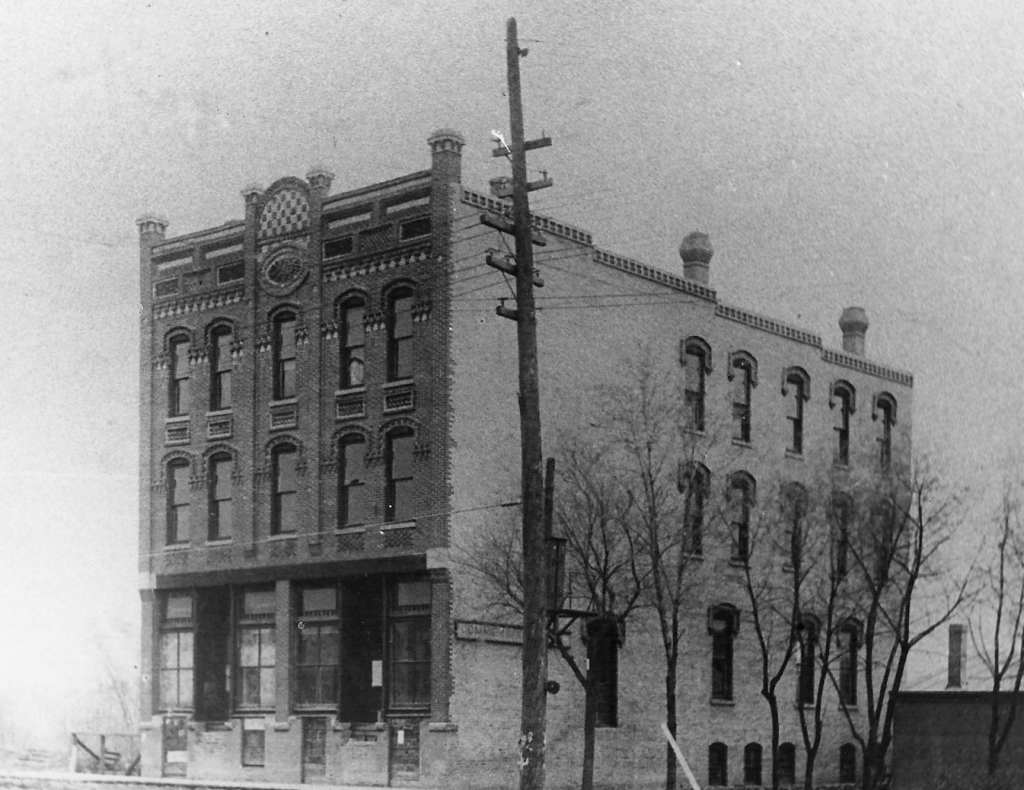
Maplewood Sets Roots in Maple Plain
The Minnesota Industrial School was a success but there still was a desire to relocate the school to a permanent farm location. In Anoka, at a Minnesota Conference Business Meeting in November, 1902, it was decided to immediately set out to raise $8,000 for a new school and $1,500 was pledged at the meeting. Despite over 50 students waiting for the school to open, fund raising went slow. Elders J. F. Pogue and C. W. Flaiz (who had become the first Northern Union Conference President), however, worked ardently in the nationwide efforts to sell “Christ’s Object Lessons” by Ellen G. White, with all proceeds going to the educational work. By 1904, the Minnesota Conference was financially ready to purchase a 94-acre farm near Maple Plain, Minnesota. The area was on a beautiful piece of land sloping gently to the shores of Lake Katrina. The location is the present day site of Baker Park Preserve (Near Wilderness Settlement) in the Three Rivers Park District.
The lovely site in a maple grove soon brought a name change – Maplewood Academy.
The school began in 1904 with 57 students, however it was not long before it was filled to capacity with nearly 100 students.
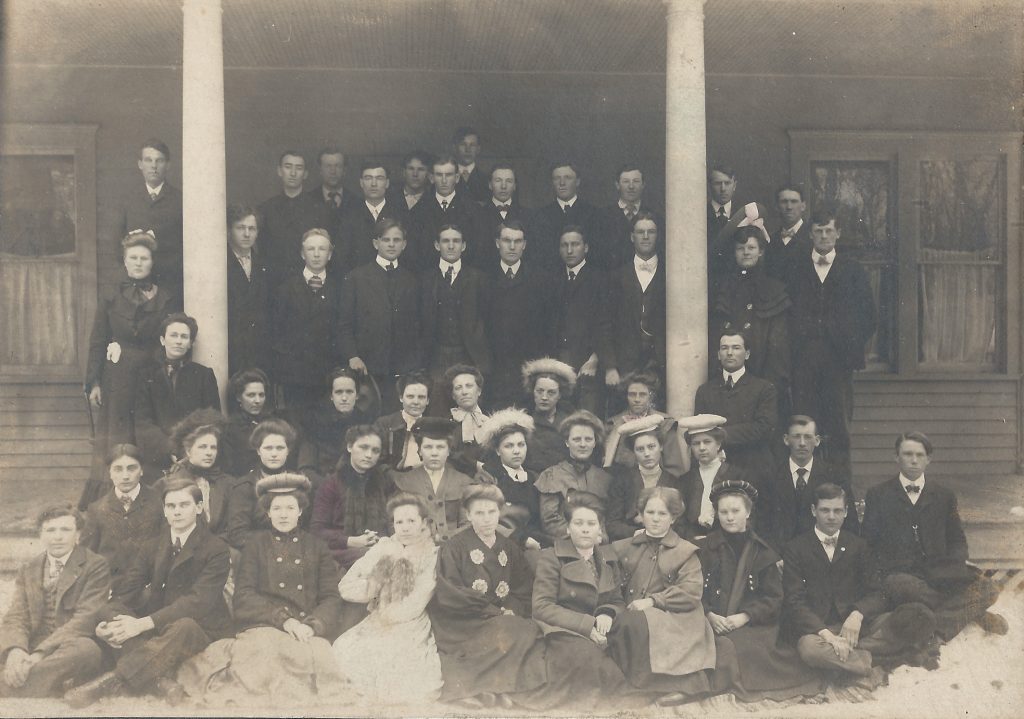
Otto O. Bernstein was the first principal with faculty of Wavie D. Tubbs, Caroline Hopkins, Mrs. Myrtle Franklin-Bernstein, Lena Rosenthal, and H. J. Sheldon.
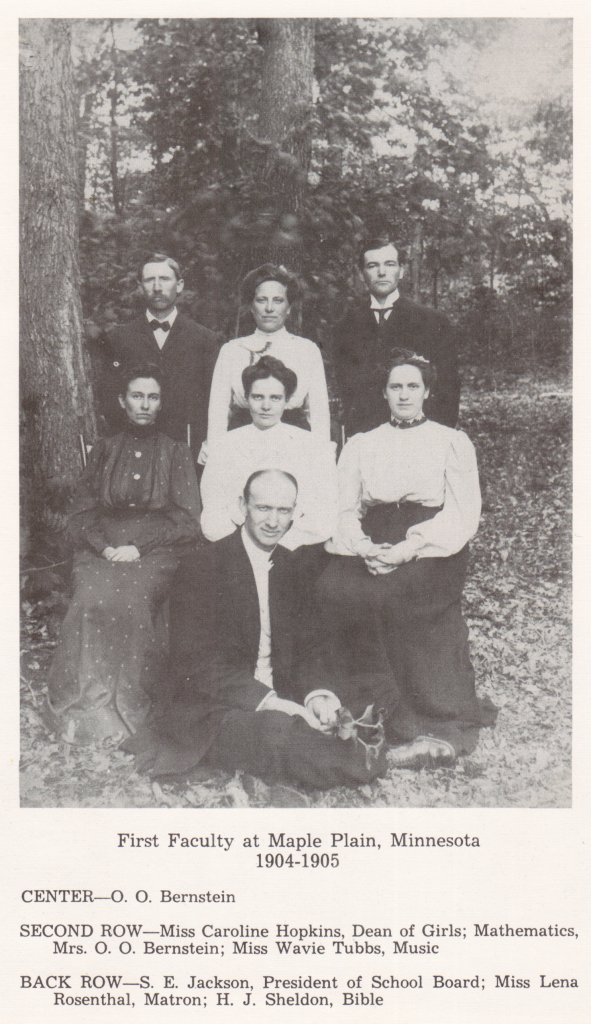
Before opening of school, an Administration Building was constructed, 40 by 40 feet square and 3 ½ stories tall. This building housed most operations until other buildings were added.
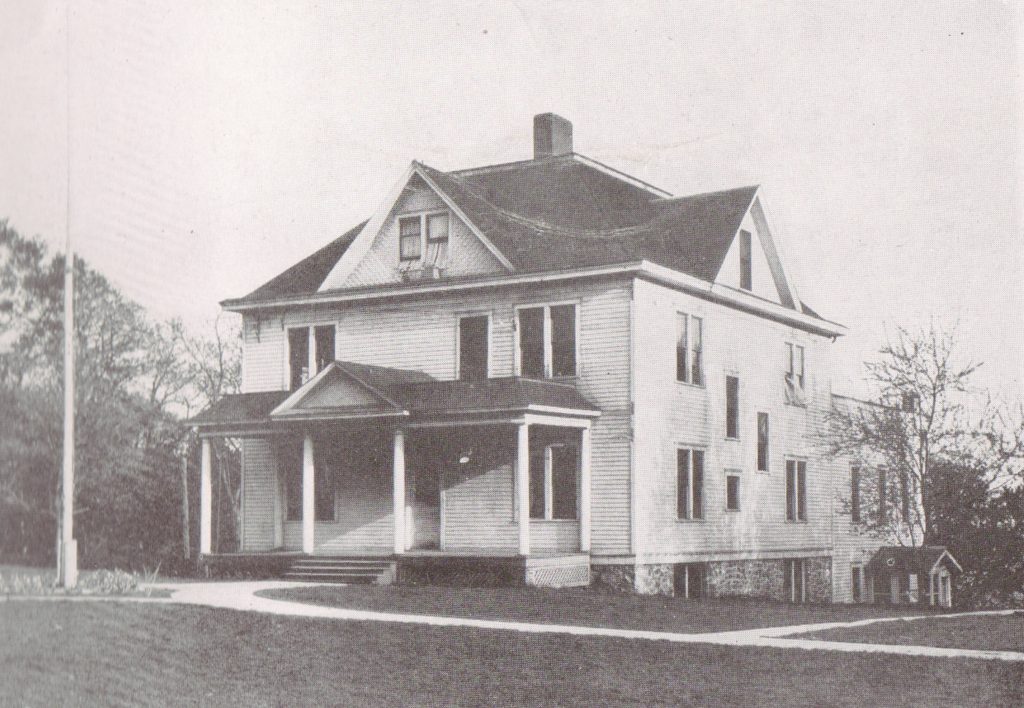
During the summer of 1905, a dormitory was built, housing nearly all of the students.
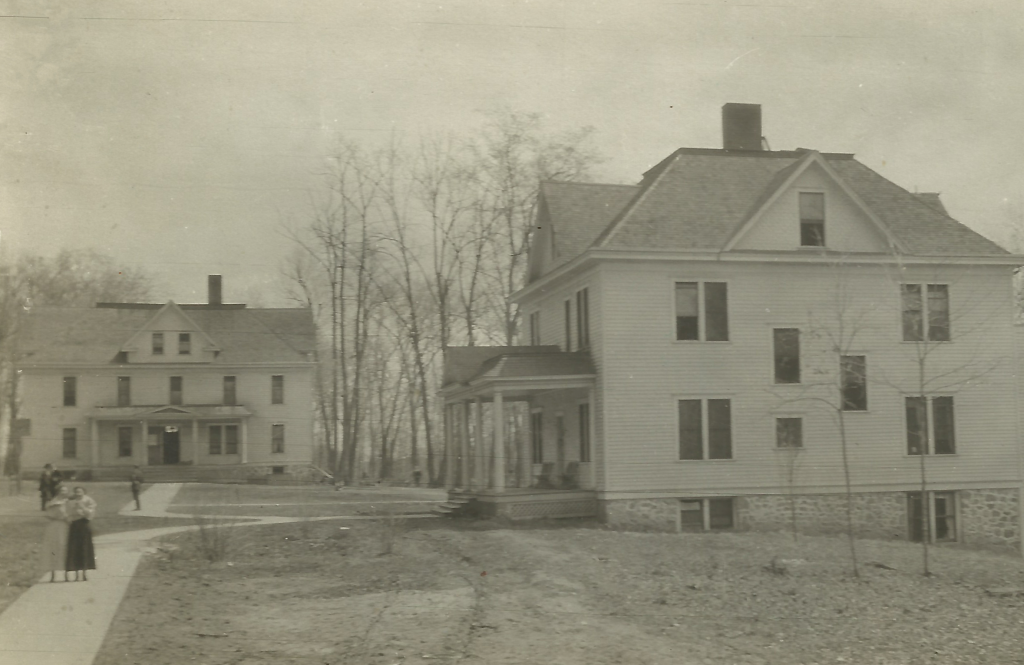
In 1911, the girls’ dormitory was built (the existing dormitory being given to the boys), and the chapel and dining room were added to the main building.
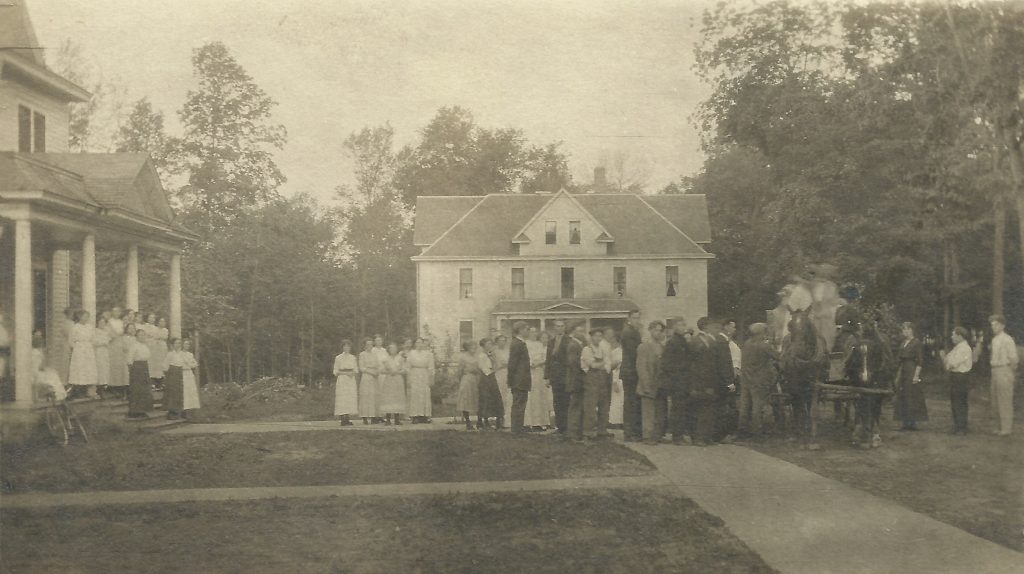
The teachers’ cottage was built in 1915.

In the summer of 1919, a 300-foot addition was made to the girls’ dormitory, providing 14 new rooms besides a much-appreciated parlor and a three-roomed detention cottage was erected for the proper isolation of patients with communicable diseases.
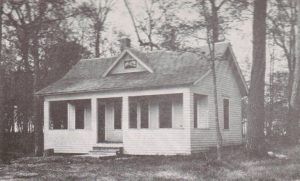
In the autumn of 1921, a 300-foot addition was made to the boys’ dormitory. All five school buildings faced a square lawn with a center flag pole.
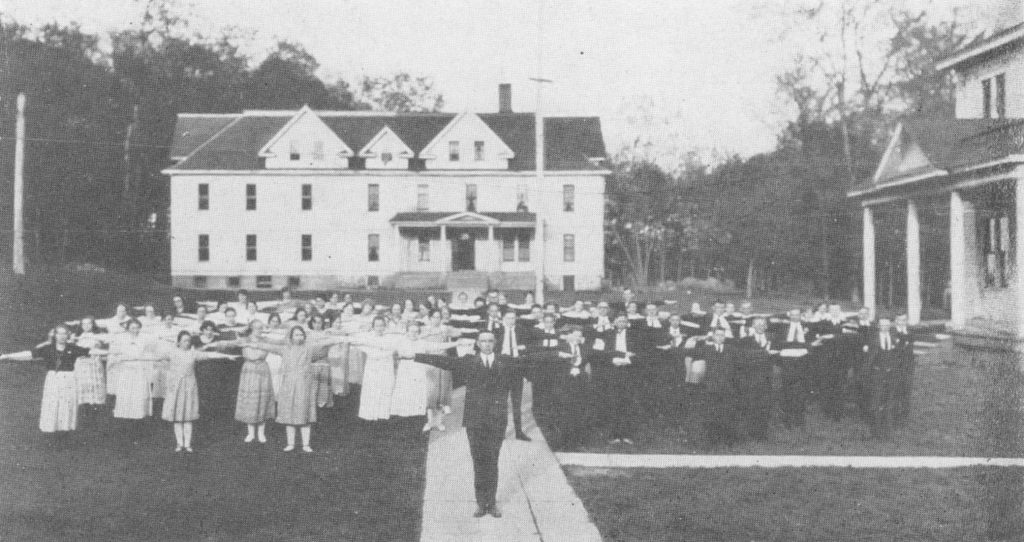
Along with the school, a farm was operated with dairy cattle, chickens, and horses for transportation.
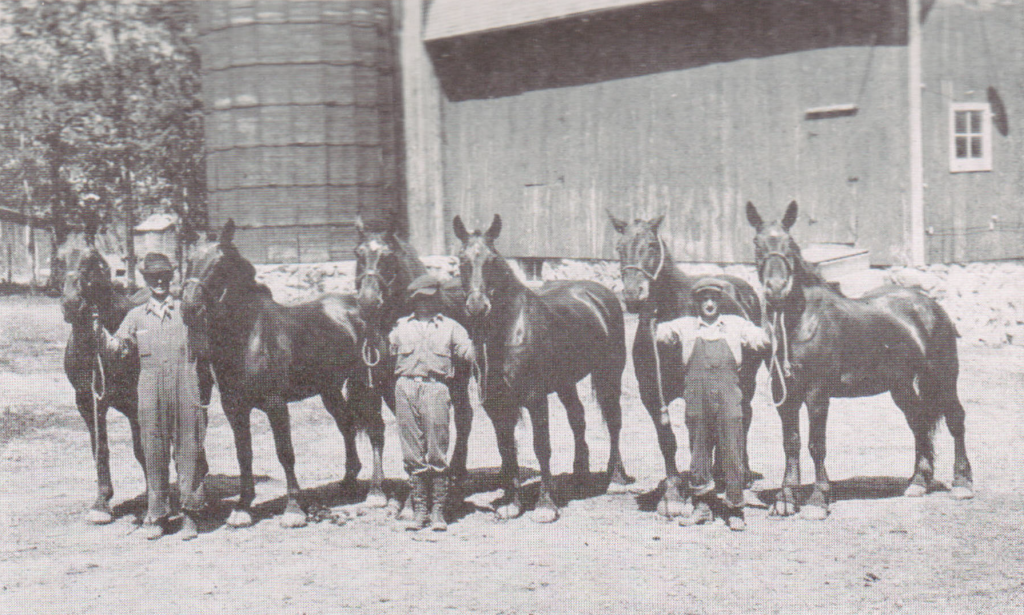
There were also gardens and berry patches to provide student employment, provisions for the dining room and produce to sell in the community.
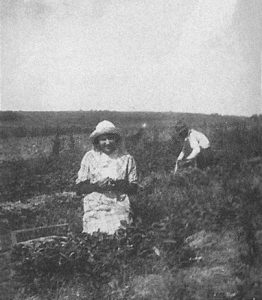
The first graduating class from Maplewood was the class of 1909 and it had two graduates, Carl J. Martinson and Winifred V. Halverson. Carl went on to become a noted physician in the Minnetonka area. Winifred, unfortunately, passed away less than two years later of scarlet fever complications while she was a junior student at Union College.
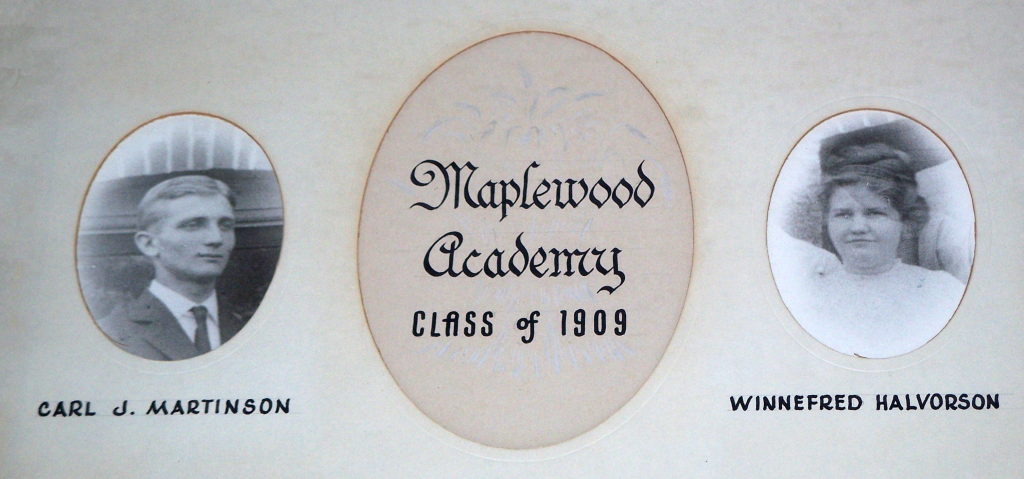
In short order, Maplewood was known throughout the nation as a premiere educational institution, bringing both SDA and non-SDA students (as many as 50% were non-SDA) from across the country.
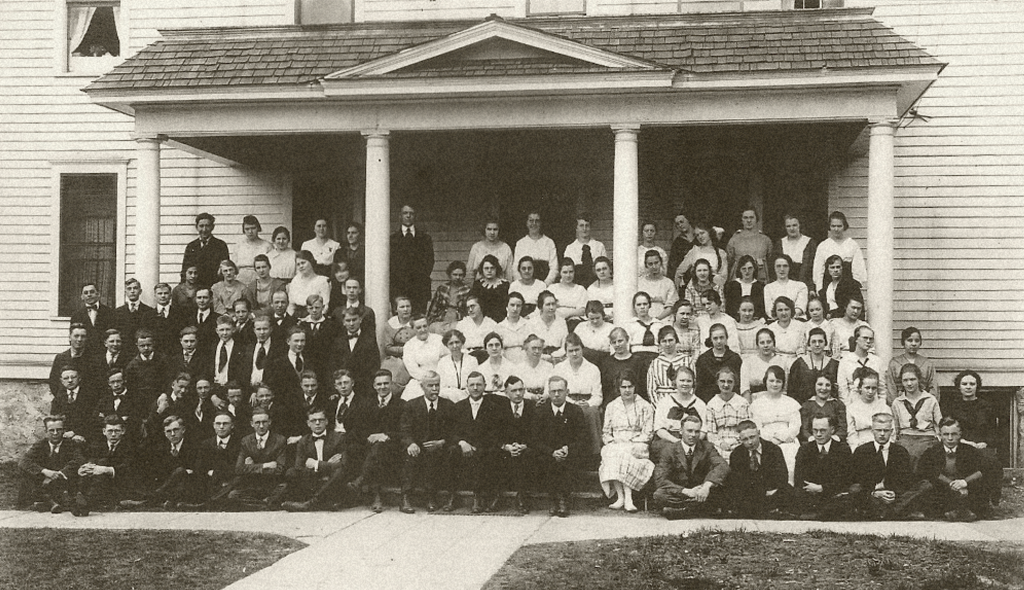
Historical Events of Significance in Hutchinson
Shortly after Maplewood’s first class graduated, the Northern Union Conference of SDAs decided foreign language studies should be moved from Union College in Nebraska to other locations. In 1910, a German Seminary was established at Clinton, Missouri and a Swedish Seminary was launched at Broadview, Illinois.
With the large influx of Danish and Norwegian immigrants to Minnesota, it seemed wise to move Danish-Norwegian studies to Minnesota and a committee set about to find a suitable location.
Hutchinson, Minnesota, had been the site of educational advancement during this decade. In 1902 a four-story brick structure located on the north end of Main Street was built when John Hutchinson, one of the founding fathers of Hutchinson, donated 10 acres for a Danish-Lutheran college. The structure was a huge and symmetrical plan, two and a half stories in height with a large gothic lancet window in the second story of the central pavilion and a central tower with a pyramidal roof and barge-boarded dormers.
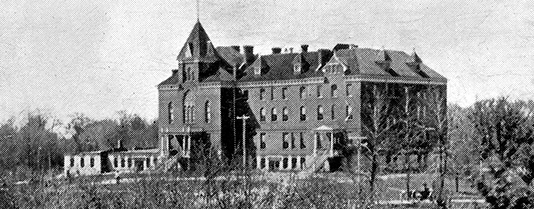
Finances only allowed the central pavilion and the east wing to be constructed in 1902. Ansgar College opened its doors to 200 students in the fall of 1902. Tragedy hit immediately when, in February 1903, a fire destroyed everything but the shell of the building. (Our thanks to the McLeod County Historical Society for the photo below.)
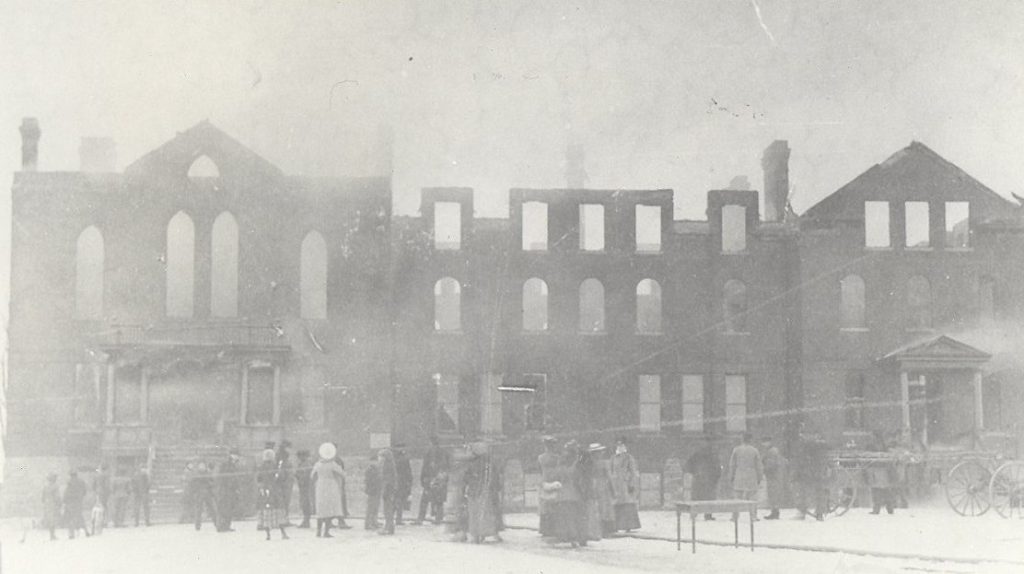
By August 1903, the central pavilion and east wing were rebuilt and ready for classes again. Ansgar, however, was forced to close its doors in 1905 because of financial difficulties.
In early 1905, the religious-minded community tried to find new occupants for the college. After unsuccessful attempts, the building was sold to G. M. Langum, who owned two business colleges elsewhere in Minnesota. The college was renamed Metropolitan College and opened its doors in the fall of 1905 as a business college. Financial trouble arose again and, in December 1906, Langum declared bankruptcy. The college principal then purchased the school, renamed it Hutchinson College, and operated it until 1909 when it closed due to financial concerns.
The SDA Danish-Norwegian Seminary
After considering Dodge Center and Lake City as possible sites for a Danish-Norwegian Seminary, the Northern Union Conference of SDAs found God provided a perfect setting in the Hutchinson College building. The city of Hutchinson was pleased about the interest, The Hutchinson Leader stating,
“A sub-committee of the Adventists came and was so pleased with the local situation that a favorable report was made, and last week the general committee of the Adventists, nineteen of them as substantial, intelligent and clean a lot of men as ever visited us, completed their investigation of the towns that were bidding for the school, by coming to Hutchinson. They thoroughly examined the college property, drove around the city, met our citizens, and the more they saw and the longer they looked, the more pleased they were.”
Arrangements were made with D. P. Jones & Co. and, in January 1910, the college property, as well as an adjoining 150 acres, was sold to the Northern Union for $22,250.00. The purchase price was quickly raised by large donations, such as those from conferences and the city of Hutchinson, combined with small donations from individuals. There was a great support of this school where workers would be trained to go throughout the world to share the gospel.
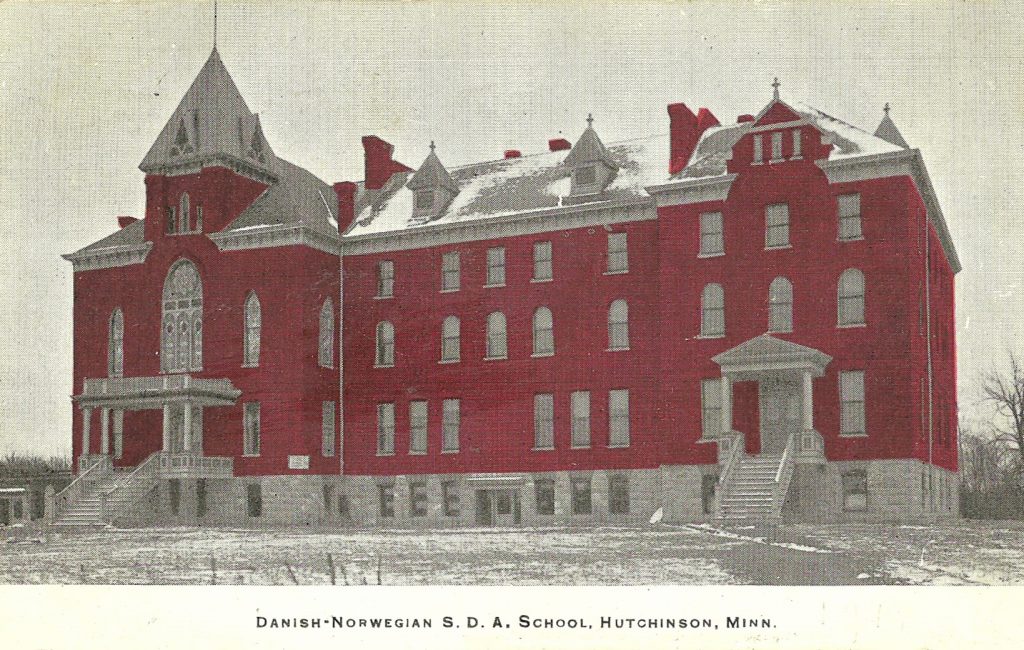
On September 28, 1910 the Danish-Norwegian Seminary opened its doors ready to prepare Scandinavian students for foreign missionary service.
When Elder W. C. White (son of Ellen G. White) visited the school and looked over the buildings, he made the remark, “If mother could see this nice school building she would say at once that this is one of the buildings God has been saving for us as a people to occupy.”
Starting with a capacity of 100, the school soon needed expansion. By 1917, with nearly 150 students and 14 faculty, it became clear that the west wing of the school must be completed.
At the height of World War I, despite tight finances for all, a call went out throughout the Northern Union for funding and $27,000 was quickly raised!
The 1917 school year opened with the new west wing in service along with a new name of “Hutchinson Theological Seminary”. 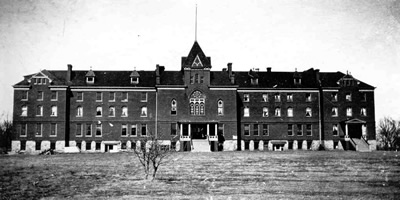 Many countries benefited from the ministry of the school’s graduates, several being the first to enter these foreign mission fields.
Many countries benefited from the ministry of the school’s graduates, several being the first to enter these foreign mission fields.
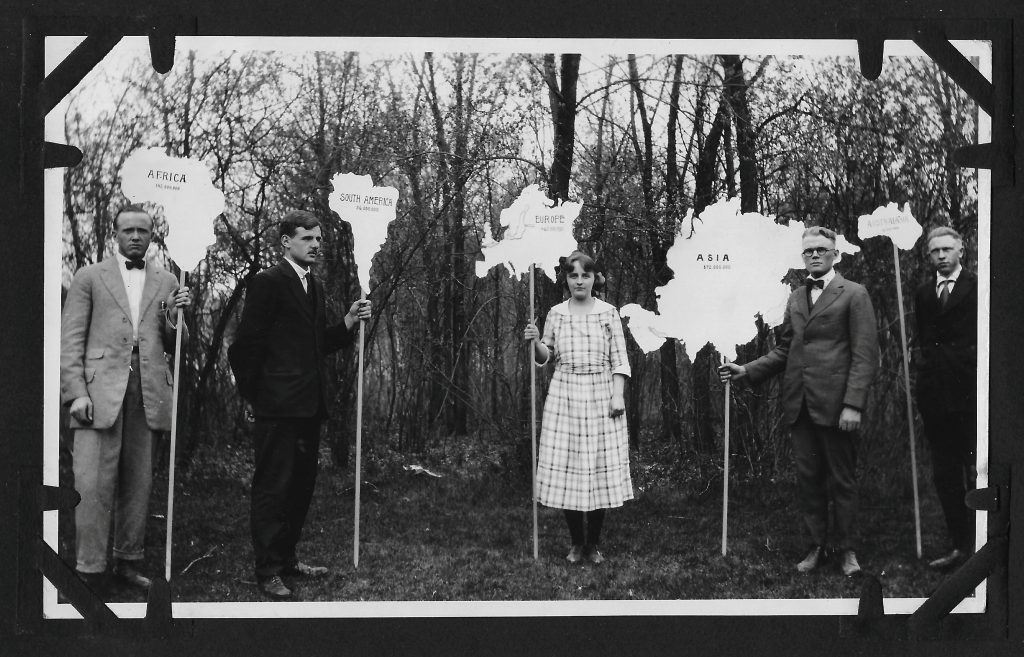
Maplewood Academy Moves to Hutchinson
By the late 1920’s however, most seminary students were fluent in English and the need for foreign language schools diminished. Most college level classes merged into the Broadview program, leaving mainly academy level classes at the seminary.
Minnesota was left with a heavier financial burden for the school and a decision was made at the 1928 Minnesota camp meeting to merge the seminary with Maplewood Academy at the Hutchinson site. (The two schools coexisted on the Hutchinson campus for two years until the seminary was discontinued in 1930.)
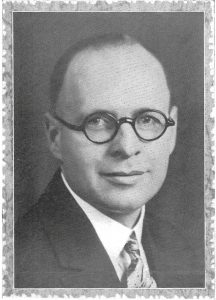
After a quarter of a century, in the spring of 1928, the last class graduated from the beloved Maplewood Academy in Maple Plain. Professor Alvin W. Johnson was the last principal at Maple Plain, and the first one after Maplewood transferred to Hutchinson in the fall.
Maplewood Academy was now located on an open campus on the summit of a broad hill, with the entire school plant, classrooms, library, chapel, kitchen, dining hall, bookbindery, and print shop all located in one building.
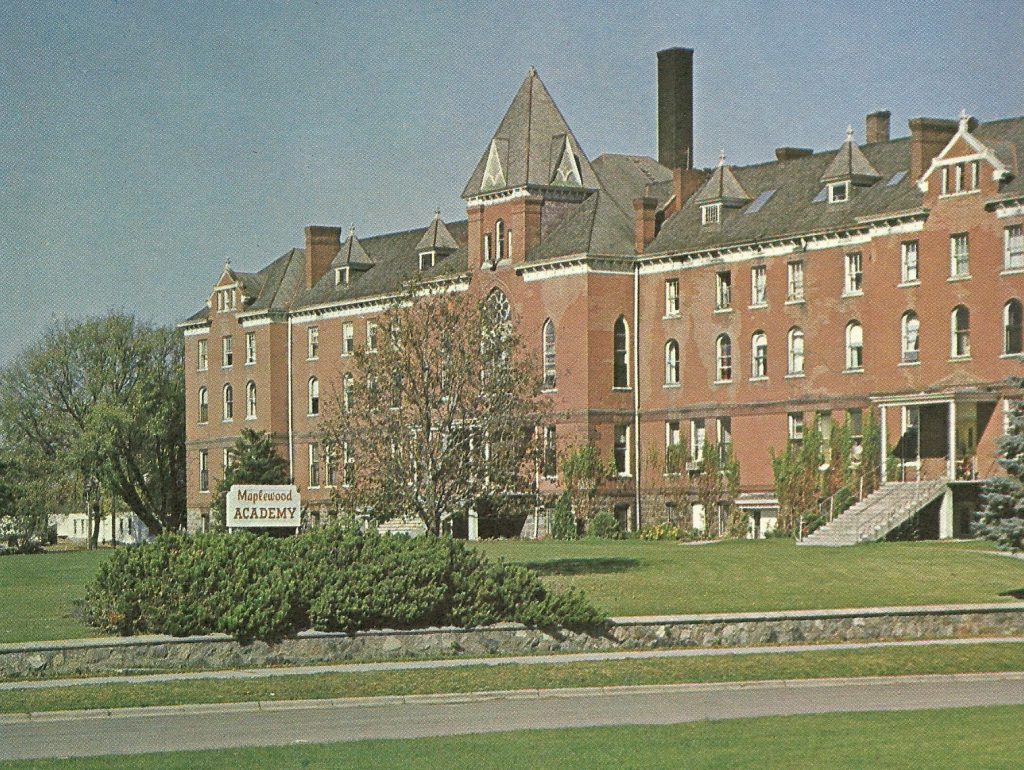
To the west of the school was the farm on 160 acres of land. The dairy herd was recognized as one of the best in the area.
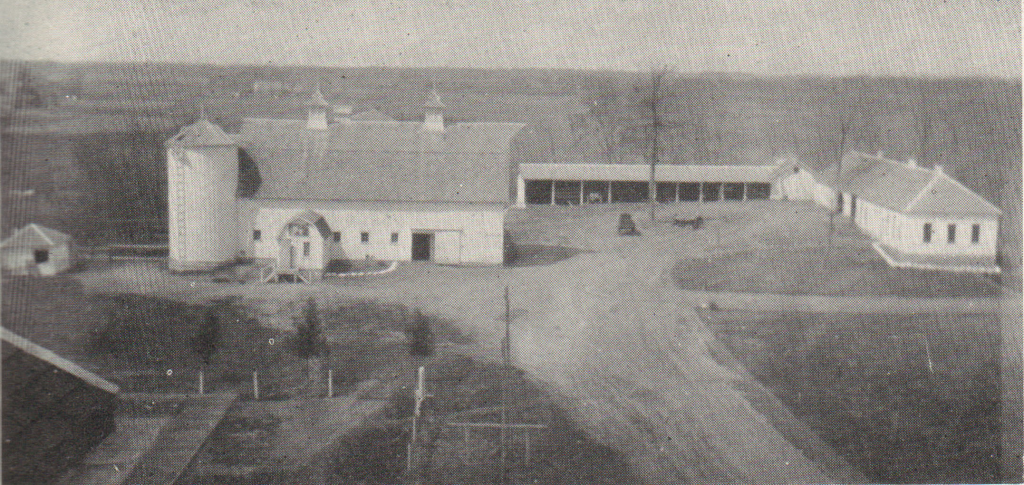
In 1939, Maplewood built a new gymnasium to replace the one in the basement of the Administration Building.
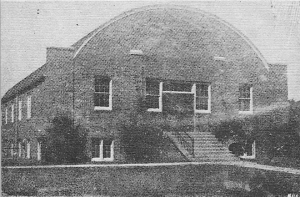
This gymnasium was in use until 1967 when the current gymnasium was built.
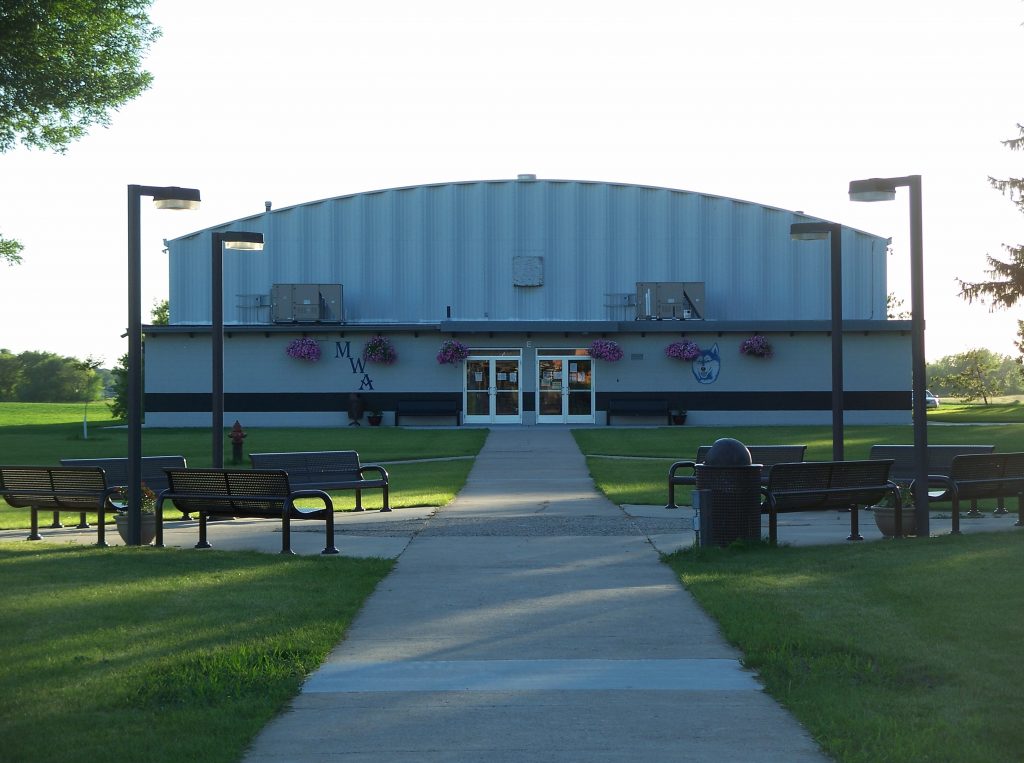
The June 23, 1955 edition of The Hutchinson Leader called Maplewood,
“one of the most impressive properties in Hutchinson. The main building, a four-story, turreted structure in the Tudor style placed high on the bluffs north of the river, has a commanding view of the city, while a broad campus in the foreground heightens this effect.”
At this time the school farm had increased in size to 240 acres and a craft shop and bookbindery were in operation. The bookbindery was widely known throughout the country with one salesman constantly on the road taking orders not only for rebinding, but also for distributing new books.
In 1958 a cafeteria/music/home economics building was added to the campus.
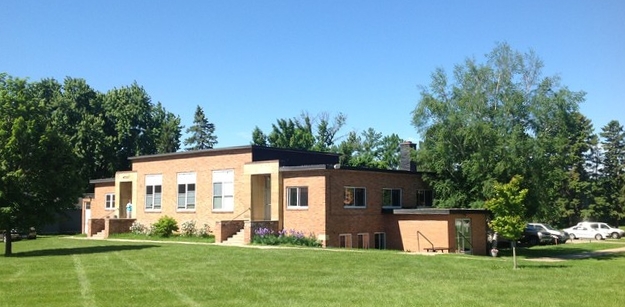
The girls’ dormitory was built in 1963, and the boys’ dormitory in 1969.
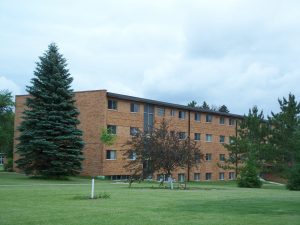
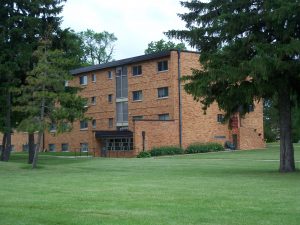
The End of an Era
In October 1976, the Maplewood Academy Administration Building was listed on the Minnesota Inventory of Historic Places due to its historical and architectural significance.
The building, however, had shown such great deterioration and wear that the Minnesota Conference voted to build a new structure to replace the old building. On April 1, 1979, ground was broken for the new Administration Building.
In May 1979, the last Maplewood Academy class graduated from the beloved old building.
The new building was constructed over the next year and the move into the new building was started January 29, 1980. Friends, faculty, and students gathered the afternoon of January 30, 1980 on the Administration Building front steps to pay tribute and say goodbye to an old friend.
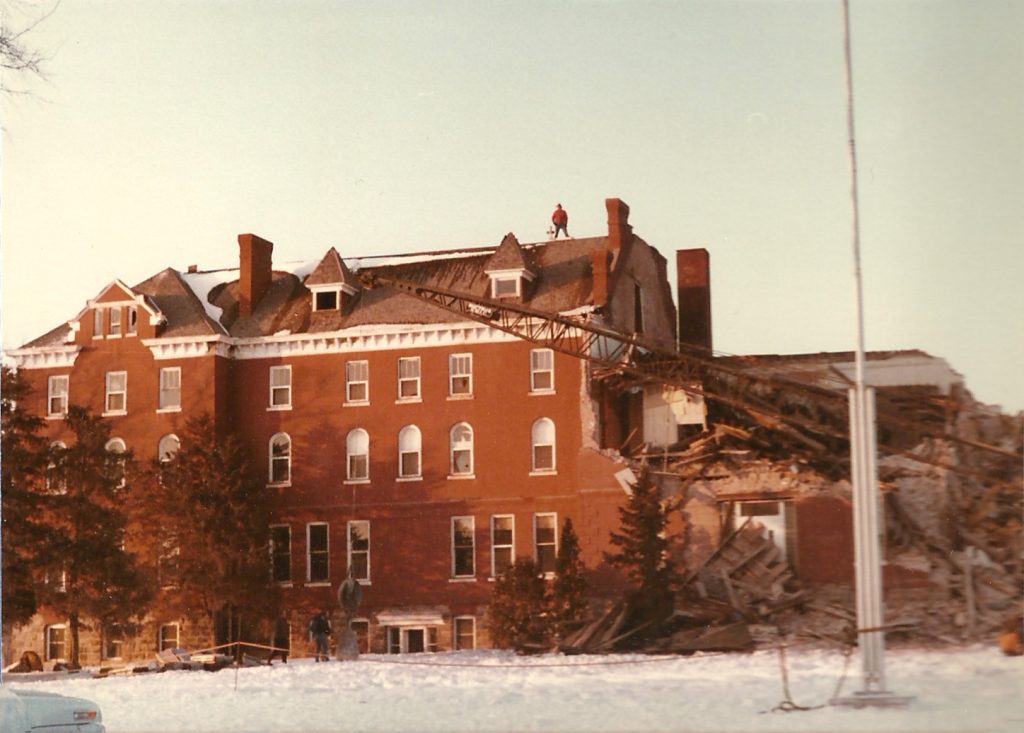
On February 6, 1980, the demolition of the old building began. It was a tearful day for many MWA alumni and friends. The old building was the place where many fond memories had been made and it had graciously served the Hutchinson community and the Seventh-day Adventist Church for over 78 years.
The chapel of the current Administration Building rests on the site of the former Administration Building – a fitting tribute to that beloved edifice.

Maplewood Today
At Maple Plain where Maplewood Academy was nestled in the beautiful maple woods and through the Hutchinson years where Maplewood Academy has been known as “The School on the Hill”, many students, faculty, and staff members have passed over the academy’s threshold. Time has changed its location and physical structures, but time will never alter the reason Maplewood Academy exists.
Educating for Eternity are the words on the school seal. These words were and continue to be the major objective of Maplewood Academy. The current motto of the school demonstrates the plan in Educating for Eternity: “grow. connect. educate. with Jesus.”
Students and staff alike have grown in their spiritual and personal lives, they have connected with a group that provides a life-long support system, all while enhancing their educational experience and, most importantly enriching their walk with Jesus. The prayer is that each alumni of Maplewood Academy will retain their love of Jesus and Maplewood and be ready to meet someday on the heavenly shores for that grand alumni reunion!
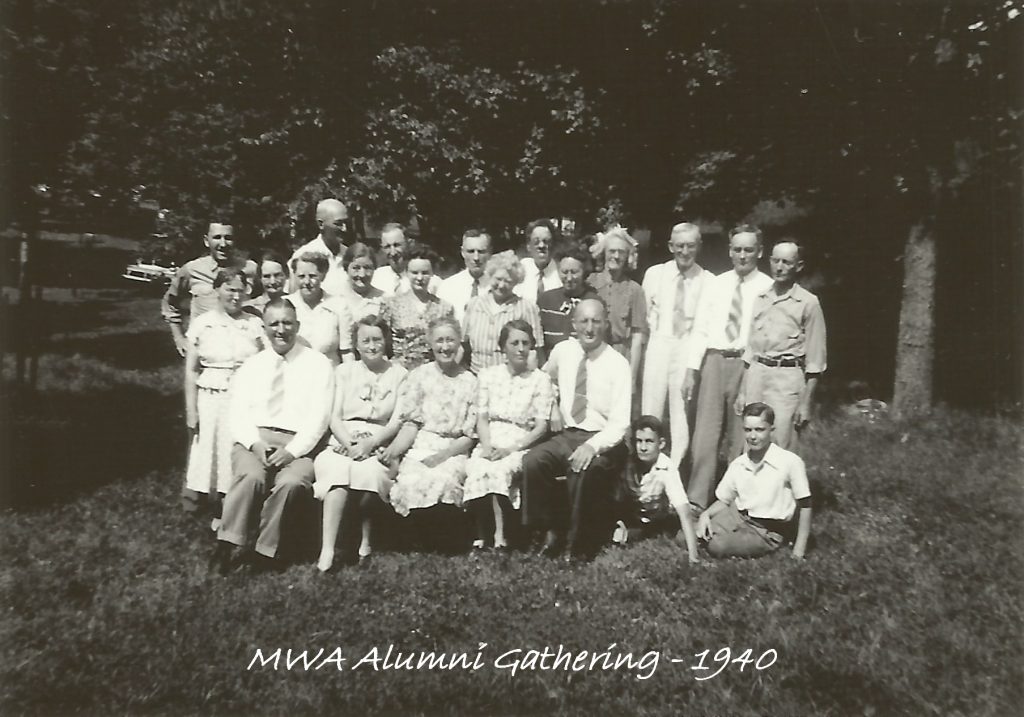
History Contributors: Kathy Joy Parke ’73, Adrian Lauritzen ’25, Alice Pettis ’50, Judy Glass ’87, Debbie Barr (F/S), Peggy Glass ’76, Nathan Shields ’99 and The Hutchinson Leader.
